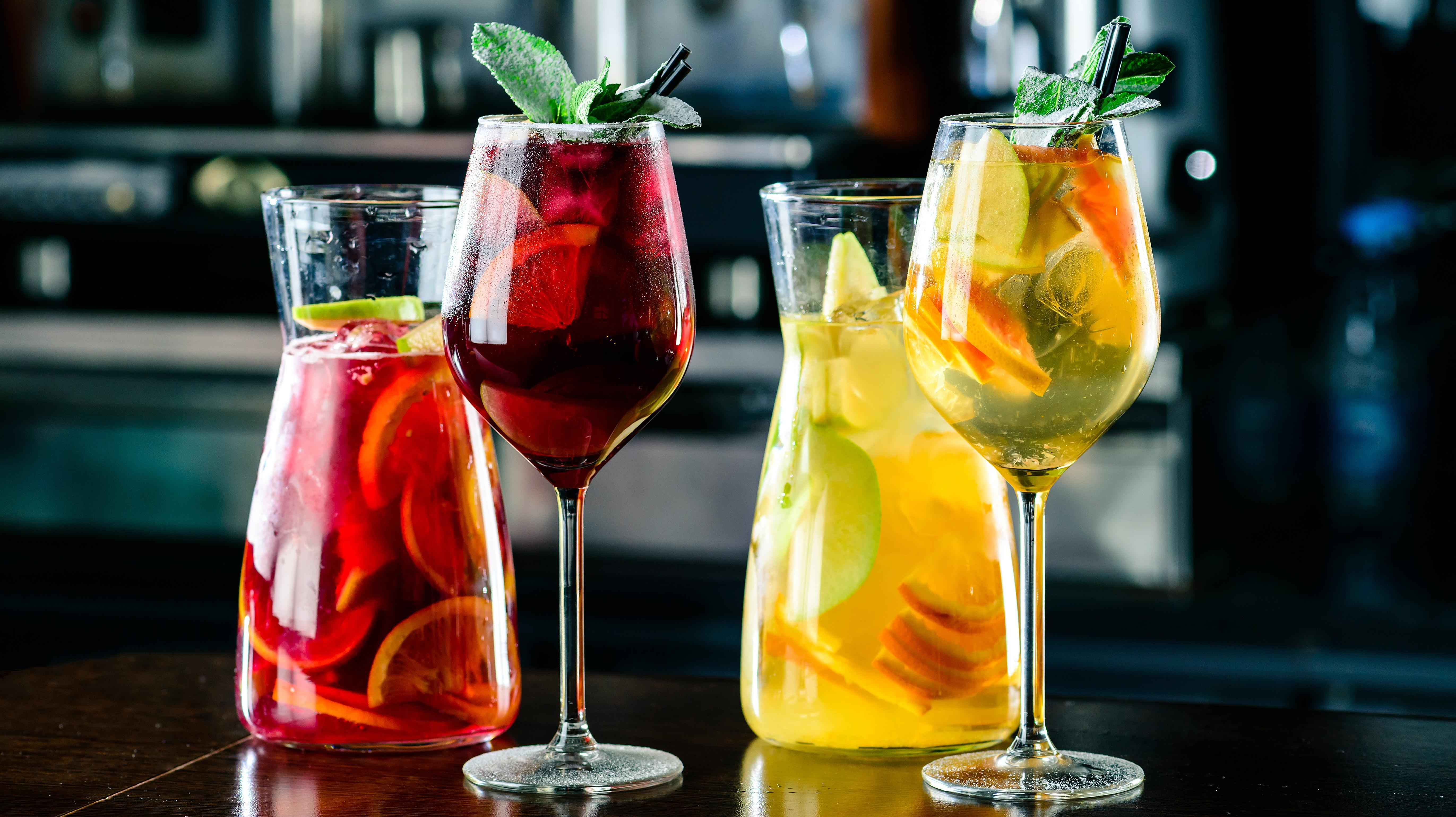What To Look For In A Restaurant Sangria
It all goes back to how the Greeks and Romans enjoyed it.
Red or white, sangria has been blessing the summertime menus of restaurants and filling the punch bowls of backyard parties for many, many years. This sweet, fruit and wine concoction has been around for so long and presented itself in such a variety of combinations that it's hard to remember how simple its origin story is.
Knowing the history behind the drink can help you spot the difference between what should be a truly refreshing and tasty cocktail experience and a cheap imbalance of fruit and leftover wine.
History of sangria
As explained by VinePair, early Greeks and Romans mixed wine with sugar, spices, and whatever they thought might taste good together to create a punch bowl-style drink called "hippocras." Because the hippocras was sometimes heated up, it's seen as the common ancestor of both sangria and mulled wine.
The drink was popular at the time because clean drinking water was not available. People in Spain were creating a similar mixture using grapevines planted by the Phoenicians and later the Romans.
Early sangria was most often made with Spanish Tempranillo and other wine from rioja along with citrus fruit. However, no two sangrias were ever made exactly the same. Because the official recipe for sangria has always been left up for interpretation, this led to variations such as white sangria, sparkling sangria, and a sangria made with peaches called zurra.
The citrus-filled drink made its way to the United States via the 1964 World's Fair in New York City. Spain had its own Pavilion and sangria was the featured beverage. The rest is history as they say.
What to look for in a restaurant sangria
Let the ancestors guide your taste buds to what's right. Sangria started off with everyone finding the combinations that work best together. We've come a long way since then, and some restaurants have it all figured out. Now it's on you to spot the ones who do.
When a restaurant lists a house sangria on their cocktail menu, my immediate thought is to look at the pairing of wine and fruit listed. While I am known as the wine novice, I do know that certain fruit flavors would pair best with a wine that has similar flavors.
There is absolutely nothing wrong with mixing up some sangria using a $10 bottle of wine and some orange slices, but if I'm paying $12 a glass, I'd like it to be better than what I would make at home with the leftover fruit contents of my fridge. And while I absolutely love a sweet wine, the key to a good sangria isn't so much sweetness as it is a balance of sweet and tart to even things out.
For example, a good sangria combo might have a dry, Spanish red wine (like that rioja used in early sangria), orange juice, orange slices, green apple, and some additional alcohol like a brandy. The green apple is key here to help balance the sweetness of orange juice and orange slices with some tartness. The fruit pairings will tell if a restaurant truly cares about its sangria or if they're just throwing something together to have on the menu.
